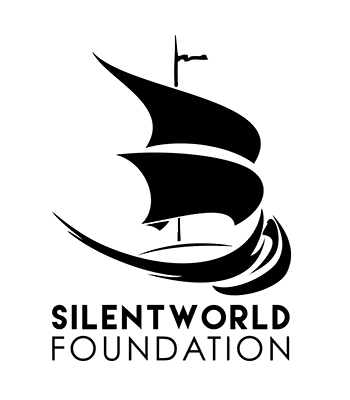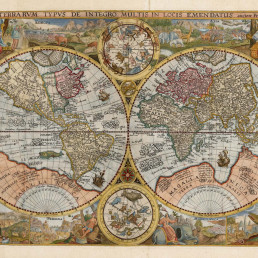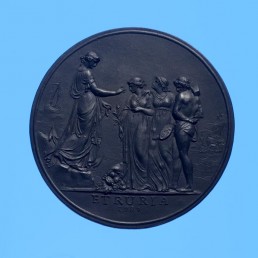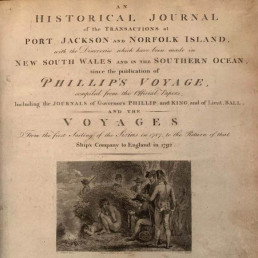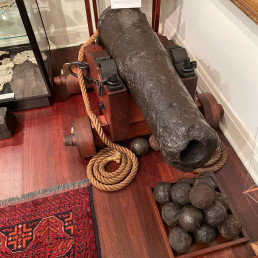
Name/TitleFirst Fleet – A List of the Naval, Marine, Military and Civil Establishment, at Botany Bay
About this objectThis document is effectively a blueprint for the foundation of Australia, and would become for many years the standard reckoning of the disposition of the First Fleet.
The first page has the list of the military and civil establishment of the Colony, with the subheading “Captain Arthur Phillip of the Navy, Governor Commander in Chief of the territory of New South Wales, and of his Majesty’s Ships and Vessels employ’d on that Coast”. Subordinate officers are listed, followed by “Six Transports carrying the Convicts”, specifying the number and sex of convicts to be carried on each. Overleaf there is a list of each of the six principal ships with their officers as well as the numbers in their complement of marines.
The list was prepared by Lieutenant John Shortland who was the Agent for the Transports and was charged with putting together the logistics of the First Fleet including the hire of transport ships, provisioning, equipment and similar. The tables and description of the First Fleet from this document appear in many subsequent publications including the first published book about the First Fleet [Eden] as well as Arthur Philip’s own account of the Voyage “The voyage of Arthur Phillip to Botany Bay…” This is the cornerstone document on which all subsequent representations of the make-up of the First Fleet were based.
This document has been tipped into a copy of the George William Anderson edition of Cook’s three voyages, ‘New Authentic and Complete Collection of Voyages Round the World’, which was printed in 1786 and would have been available at just the time when the First Fleet was being assembled.
MakerJohn Shortland - Author
Maker RoleAuthor
Date Made1787
Period18th century
Place MadeSydney, Australia
Medium and MaterialsInk and paper.
Inscription and MarksPart of the right hand margin torn without loss of text, barest clipping of the text at right margin, very lightly dusted and a little faded, but bright and legible.
Inscribed three times with the date “18th July 1788” by George Lapthorne in 1788.
Object TypeManuscripts and Ephemera
Object numberSF000155
Copyright Licence![]() Attribution - Non-commercial - No Derivatives (cc)
Attribution - Non-commercial - No Derivatives (cc)
Explore by category
Maps and Charts
Date range: 1541-1836
Ship Models
Date range: 1629-1890
Maritime Paintings
Date range: 1793-1849
Manuscripts and Ephemera
Date range: 1768-c1850
Medallions & Convict Tokens
Date range: 1619-1880
Landscapes
Date range: 1768-c1850
Books
Date range: 1694-c1850
Currency and Shares
Date range: 1624-1823
Printed Material
Date range: 1541-1836
Maritime Archaeology
Date range: 1629-1854
Curator's corner
New acquisitions, staff favourites and curios
The mug is decorated with an underglaze and a blue transfer print. On the body, it is titled ‘Emigrants to Australia’. This type of body and glaze was discontinued by 1840. Comparison of the handle shape and the profile of the foot, point to the attribution of manufacture by the Davenport Factory.
Delta was a ship-rigged vessel with two decks and three masts. It was built in Dordrecht, Netherlands in 1839 at the shipyard of Jan Schouten and registered in the same port. Its hull was constructed of oak and sheathed in ‘yellow metal’. Delta was owned by H. van der Sande at the time of its loss and was engaged as a cargo trader.
The Delta carried 29 crew and passengers, while sailing from Melbourne to Batavia in ballast when wrecked at Kenn Reefs on 30 May 1854 whilst under the command of Captain J.G. Kunst. This vessel loss supports the pattern of shipwrecks located on a well-travelled shipping route that was poorly charted until the mid-nineteenth century. The crew of the Delta could see four other shipwrecks at Kenn Reefs at the time of their vessel’s loss.
Important image of a ship associated with Matthew Flinders, that would shortly become one of the most famous early shipwrecks in eastern Australian waters. This is a fine ship’s portrait, by one of the great exponents of the art
